Abstract
Human immunodeficiency virus (HIV; formerly known as human T-cell lymphotropic virus type III/lymphadenopathy-associated virus, HTLV-III/LAV), the retrovirus that infects T4-positive (helper) T cells of the immune system, has been implicated as the agent responsible for the acquired immune deficiency syndrome. In this paper, I contrast the growth of a "normal" virus with what I call an immune system retrovirus: a retrovirus that attacks the T4-positive T cells of the immune system. I show that remarkable interactions with other infections as well as strong virus concentration dependence are general properties of immune system retroviruses. Some of the consequences of these ideas are compared with observations.
Full text
PDF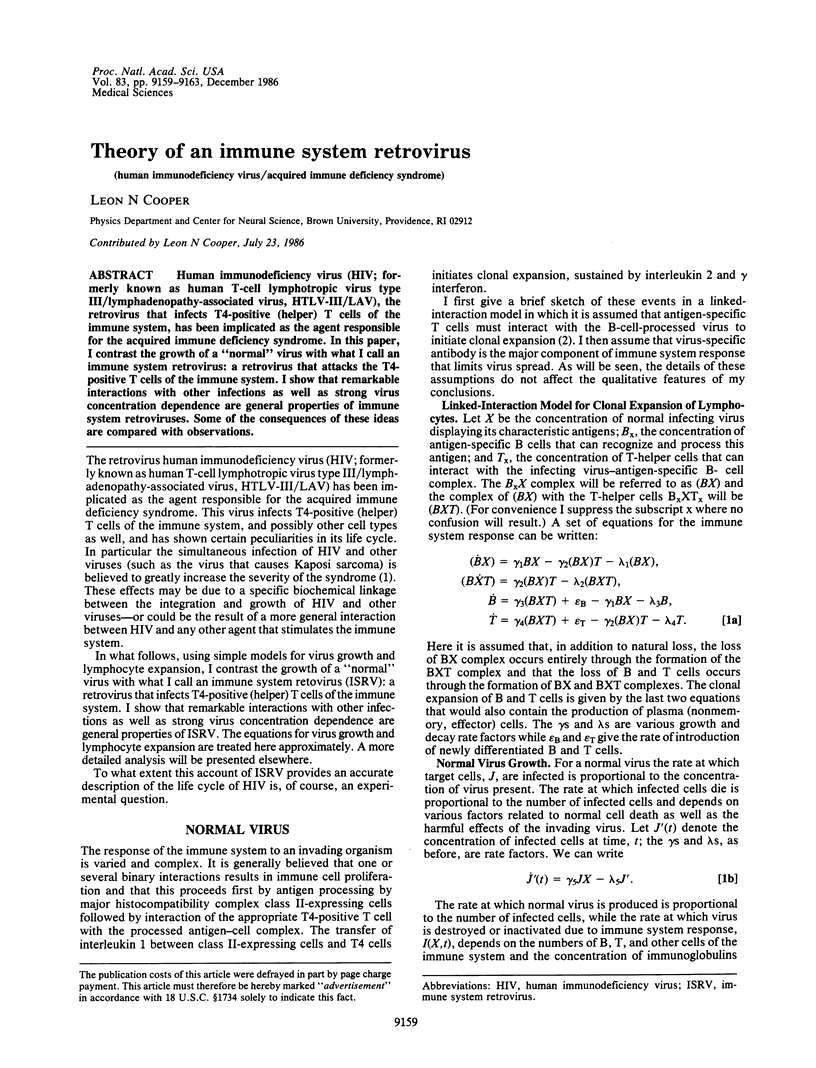
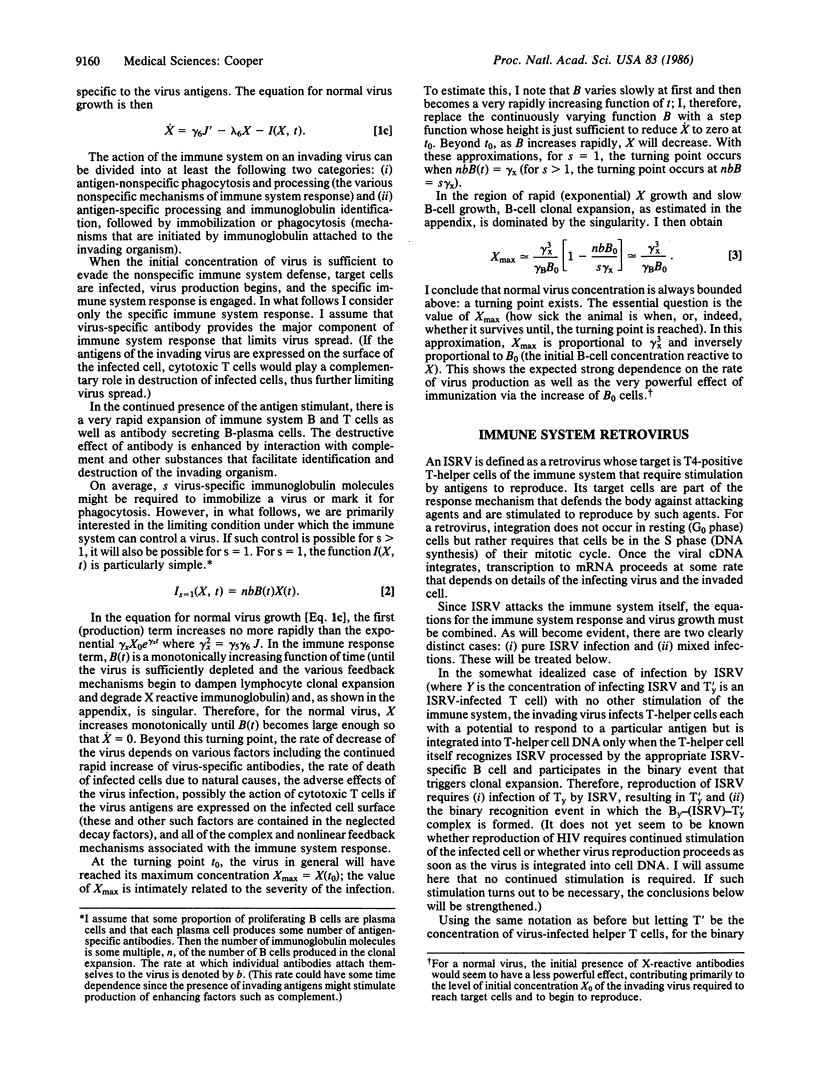
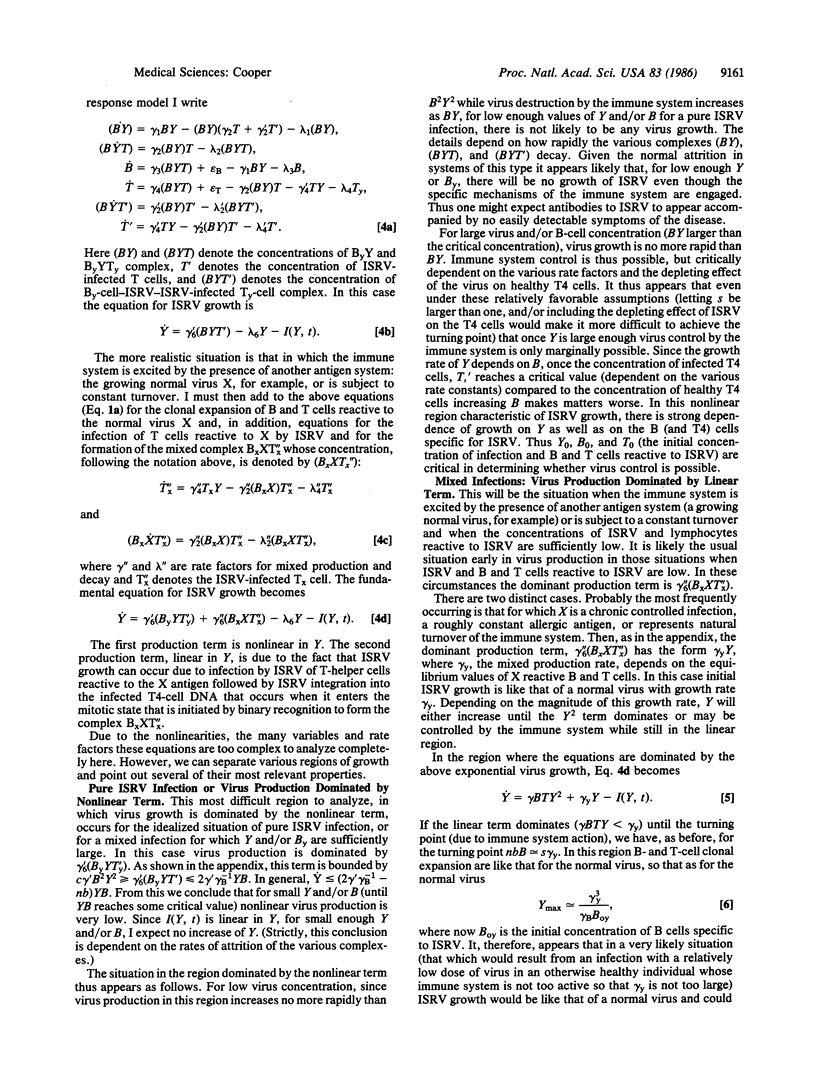
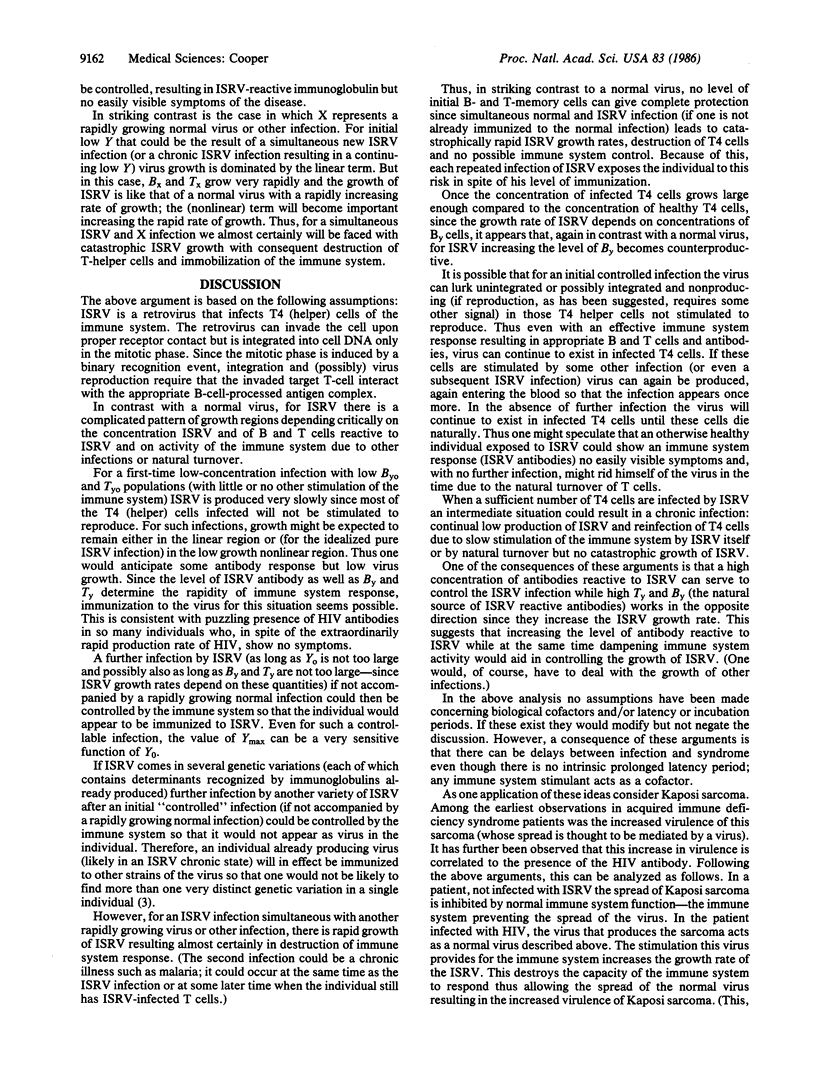
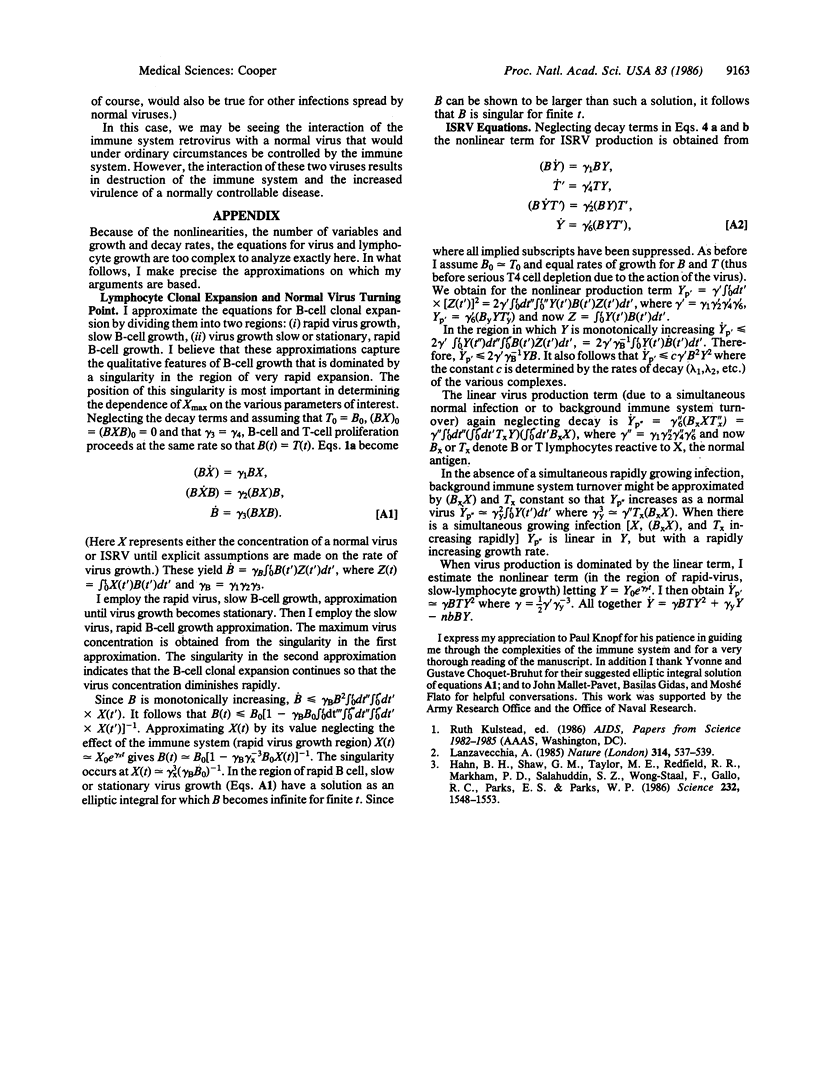
Selected References
These references are in PubMed. This may not be the complete list of references from this article.
- Hahn B. H., Shaw G. M., Taylor M. E., Redfield R. R., Markham P. D., Salahuddin S. Z., Wong-Staal F., Gallo R. C., Parks E. S., Parks W. P. Genetic variation in HTLV-III/LAV over time in patients with AIDS or at risk for AIDS. Science. 1986 Jun 20;232(4757):1548–1553. doi: 10.1126/science.3012778. [DOI] [PubMed] [Google Scholar]
- Lanzavecchia A. Antigen-specific interaction between T and B cells. Nature. 1985 Apr 11;314(6011):537–539. doi: 10.1038/314537a0. [DOI] [PubMed] [Google Scholar]


